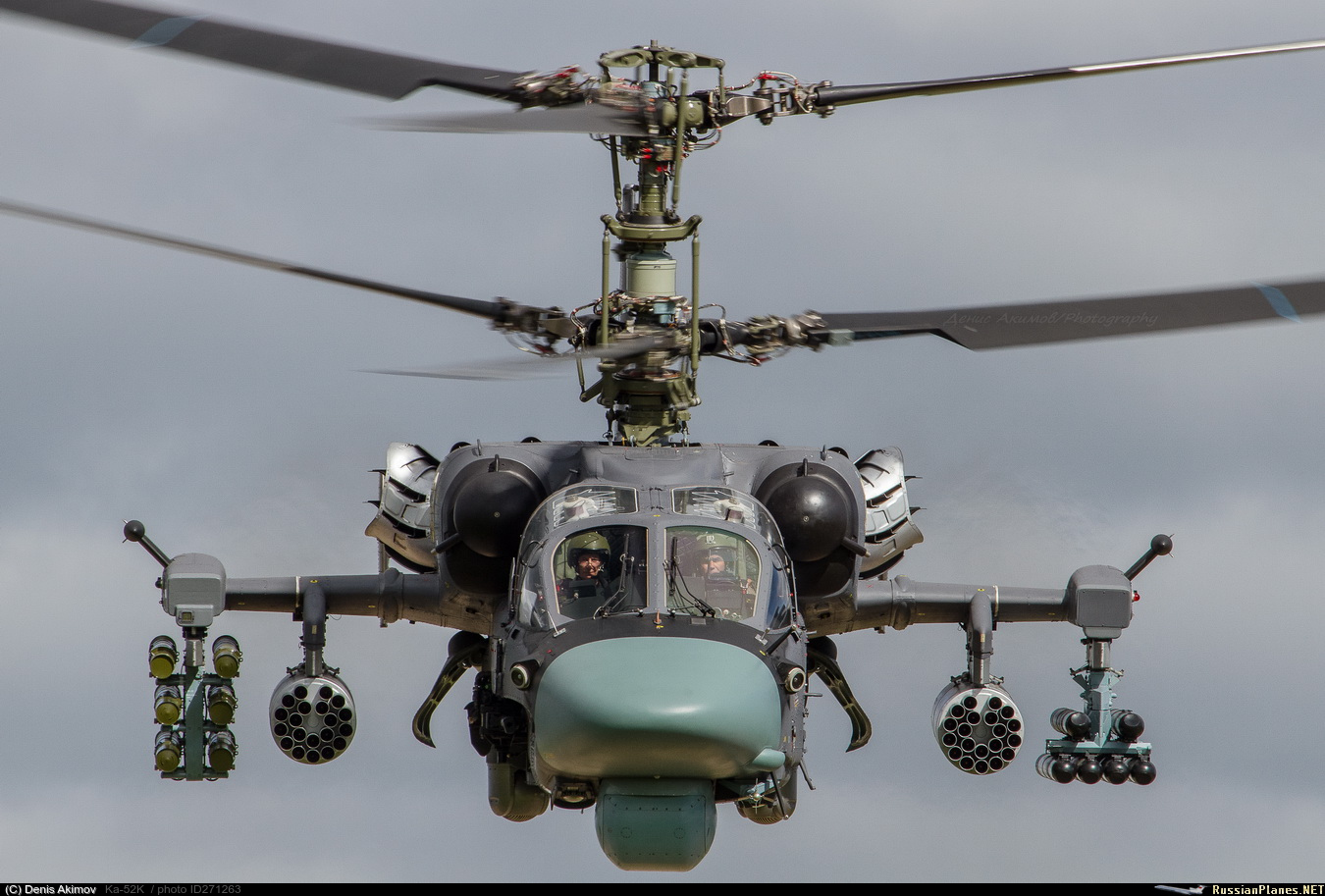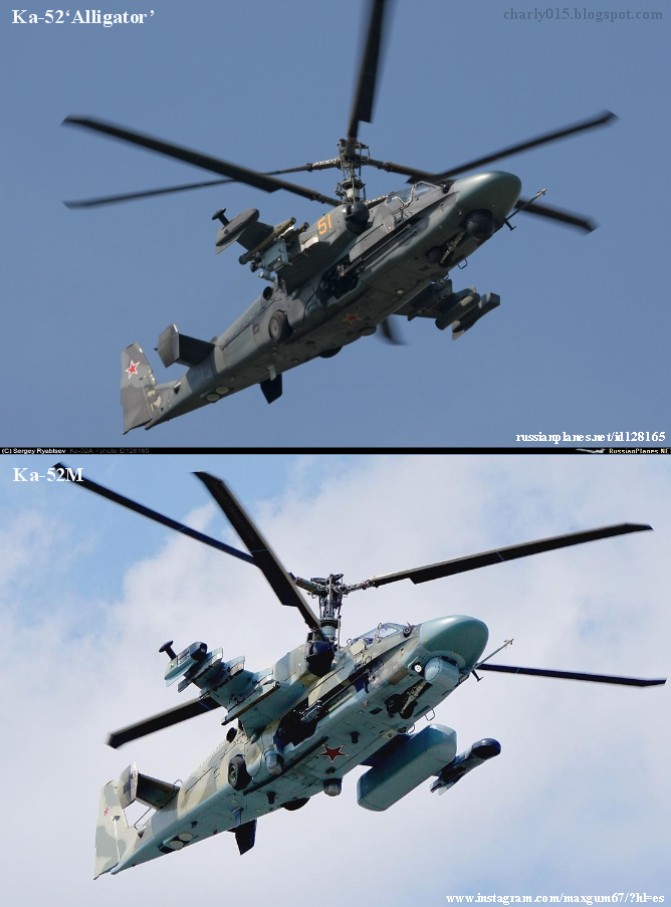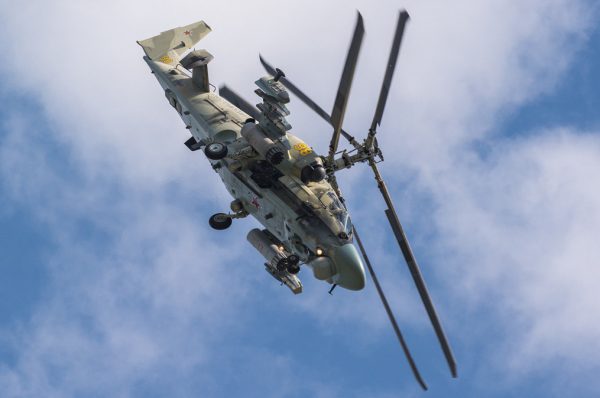The Russian military will receive a lethal attack helicopter, the Ka-52M ‘Alligator’, amid its tensions with Ukraine and NATO.
Earlier this month, the Ka-52M heavy attack helicopter, seen as Russia’s answer to the American Boeing Apache chopper, was showcased at the Dubai Air Show and is now all set to be featured at the Egypt Defense Expo, EDEX 2021.
Russia has been earnestly trying to pitch Ka-52M and Mi-28NE helicopters to the Middle Eastern countries in recent times.
The first 15 new Ka-52M attack helicopters will enter service with the Russian army in 2022, according to Sputnik News Agency.
“The first deliveries will begin in 2022 … 15 per year, that is, 15 vehicles in 2022 and 15 vehicles in 2023,” Sputnik quoted a source as saying. This means there will be 30 attack helicopters in Russian service in the next two years which will is believed to boost Russia’s defense capability manifold.

The Ka-52M choppers are equipped with an upgraded optoelectronic system with an increased range of target detection and recognition; a new digital motor, providing for more precise pointing; a new radar system with an active phased array antenna; and a guided increased-range projectile.
This helicopter is believed to significantly improve Russia’s Intelligence, Reconnaissance and Surveillance (IRS) missions at a time when the country is now faced with the twin challenges of Ukraine joining the NATO and the Western countries using members in the Eastern European region to conduct military drills.
The Russian Ka-52M ‘Alligator’
After having assembled two prototypes of the helicopter in 2020, test flights were carried out at Arsenyev Aviation Company, as previously reported by the EurAsian Times.
Russian Helicopters Holding Company (a subsidiary of Rostec State Corporation) inked a contract with the Ministry of Defense to provide the first modified Ka-52M helicopters at the worldwide military and technical event, Army-2021.
The new Ka-52M attack/reconnaissance helicopter is an improved variant of the Ka-50. It has a twin-seat cockpit, a broader nose and a longer fuselage compared to the previous one.

The new upgrades to the existing Ka-52 helicopter include AESA radar, enhancing the target detection, tracking, and engagement ranges for its onboard weapon systems alongside a new advanced electric power supply and avionics.
According to reports, the Ka-52 ‘Alligator’ is the world’s first operational helicopter with ejection seats. It is equipped to carry out a range of operations including attack, reconnaissance, and command. Its coaxial rotor arrangement allows it to do maneuvers like funnels and flat turns, and easily engage moving targets in less protected areas.
Advanced missile weaponry has been mounted and tested on the helicopter. The Ka-52M has been modified to work with unmanned aerial vehicles (UAVs). The data collected by the drones will aid the crew in improving situational awareness on the battlefield as well as intelligence collecting at a wider distance.
The Alligator’s capability to seamlessly operate over the mountains and the sea surface makes it a formidable platform. It possesses features like low susceptibility to wind impacts, high combat survivability, and open avionics design, which allows the operator to install the equipment of his choice. This flexibility is expected to boost Russian chances to market this helicopter to an array of customers, especially in the Middle East.
Earlier, the UAE, Armenia, and Kazakhstan had shown interest in buying this lethal attack helicopter. The export variant of Ka-52M is called Ka-52E.

Rostec has also agreed to design and produce Ka-52Ms for the Russian Navy until 2023, as reported by Eurasian Times in August this year.
The induction of this helicopter will aid the Russian Military in tracking and chasing away the adversary aircraft. Moscow recently accused America of rehearsing a nuclear strike against Russia in the backdrop of the latter’s tensions with Ukraine and the escalating border crisis between Belarus and Poland.
NATO countries hold Russia responsible for both the crises and have significantly upped their military activities in the region in recent days.
? #Zakharova: The #NATO2030 report claims that #Russia ?? is encircling #NATO on all sides, and routinely engages in intimidatory military operations in the immediate vicinity of NATO. The bloc plans to maintain a deterrence approach towards Russia pic.twitter.com/AjIeOsrQNy
— MFA Russia ?? (@mfa_russia) December 3, 2020
It’s pertinent to mention here that Russia of late has announced production, upgrade and induction of many weapon systems, that were planned years ago.
For instance, the country has announced modification of its MiG-31, mass production of Tsirkon hypersonic missiles, unveiled new S-550 Air defense systems, air-drop version of Tornado, to name a few.
The big bang unveiling of the Su-75 ‘Checkmate’ stealth fighter earlier this year and its subsequent display at Dubai Airshow were clear signals that Western military analysts have taken serious note of. And as the Russia-NATO rift widens, the country’s military modernization is expected to pick up the pace even further.
- Contact the author at sakshi.tiwari9555@gmail.com
- Follow EurAsian Times on Google News




